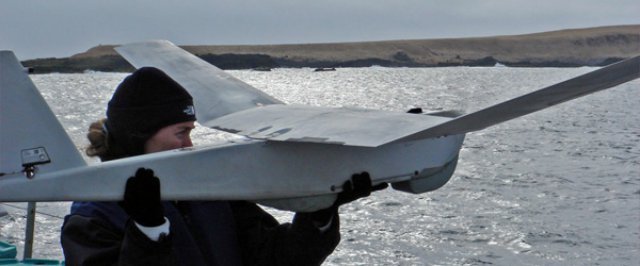Quote from a Florida Fish and Wildlife Conservation Report: “The vessel Peter Gladding and crew along with NOAA officials spent six days in the Dry Tortugas testing an unmanned, remote-controlled UAS called the Puma AE. The Puma AE captures images, video and has infrared capabilities,” the report says.
“While in flight, the small aircraft Puma AE is extremely stealthy and can barely be seen or heard and can be launched, operated and recovered from small vessels. Because of its numerous attributes, officers were quick to realize that the aircraft is also perfect for law enforcement applications. The operation concluded with Officers Martin Messier, Raul Pena-Lopez and Josh Peters issuing two federal citations.”
Those citations were issued for a boat being anchored in a restricted area of the Dry Tortugas North Ecological Reserve without a permit and for a sailboat fishing illegally in the Tortugas South Ecological Reserve. This led to the crew wondering exactly how well they could track other illegal activities such as filleting fish at sea, so they are currently testing the effectiveness, which explains why people have been caught.
Wondering how wide spread UAS use is in law enforcement, I contacted deputy special agent in charge of the SouthEast division of the NOAA Otha Easley. He made no attempt to hide the fact that UAS were in use. “We are currently studying the effectiveness in drones and how much we want to invest in them,” he said. “There have been citations for different restrictions such as no fishing zones, no motor zones, and fishery violations. A vessel can be observed by UAS, airplane or vessel, and often times this requires the officers to investigate first hand to confirm a violation.”
A UAS could be operated by the Coast Guard, the Florida Fish and Wildlife Conservation Commission or the National Oceanic and Atmospheric Administration. Any of the three can give a ticket for a federal fishery violation, and in fact, the NOAA pays the FWC to enforce federal fishery regulations.
“The most common violation of recreational fishermen is keeping prohibited species out of season, such as red snapper and gag grouper,” Easley said. “We’re not quite there in terms of regular use of drones for enforcement and are still thinking about it.”
Anglers are torn at the thought of UAS. Many feel that it’s an invasion of privacy and more freedoms being taken away. Others feel that if you’re not doing anything wrong, you have nothing to hide.
One thing is for certain, having the thought of a drone watching you could change your behavior in terms of the laws offshore. Much like a red-light camera, most people are extra cautious when they know where one is.
“The thought of an eyeball there has a tendency to change people’s behavior,” Easley said.
Source: Bradenton Herald

